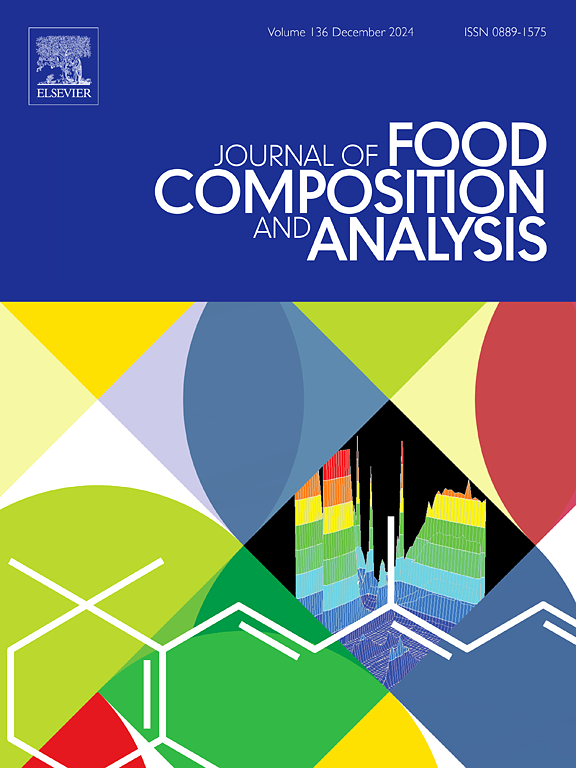Evaluating a rapid enzymatic assay vs. ultra-high performance liquid chromatography for free asparagine determination in pea and lentil seeds
IF 4
2区 农林科学
Q2 CHEMISTRY, APPLIED
引用次数: 0
Abstract
Acrylamide, a class 2 A carcinogen, raises significant food safety concerns. The free amino acid asparagine (ASN) is a precursor of acrylamide formation in foods after high-temperature processing; therefore, accurate measurement of free ASN is essential for risk assessment. This study aimed to compare free ASN determination methods, using a novel rapid enzymatic assay with an established ultra-high-performance liquid chromatography (UHPLC) method, in seeds of field pea (Pisum sativum L.) and lentil (Lens culinaris), important crops and sources of plant-based protein. Quality parameters, such as sensitivity, percentage error, and precision were evaluated. The rapid enzymatic assay demonstrated consistent low percentage error (< 1.7 %) and high precision (CV% < 1.20) compared to the UHPLC technique (error from 4.9 % to 14.8 % and CV% < 0.94). A high Pearson correlation (r > 0.996) between techniques confirmed the enzymatic assay’s reliability for routine asparagine quantification in simple laboratory and industrial settings. These findings support the potential of using a reliable, rapid, and user-friendly technique that eliminates the requirements of sophisticated instrumentation and complex sample preparation for free ASN analysis, and underscore the need for further research on pulse flour to manage acrylamide risks effectively in processed foods.
求助全文
约1分钟内获得全文
求助全文
来源期刊

Journal of Food Composition and Analysis
工程技术-食品科技
CiteScore
6.20
自引率
11.60%
发文量
601
审稿时长
53 days
期刊介绍:
The Journal of Food Composition and Analysis publishes manuscripts on scientific aspects of data on the chemical composition of human foods, with particular emphasis on actual data on composition of foods; analytical methods; studies on the manipulation, storage, distribution and use of food composition data; and studies on the statistics, use and distribution of such data and data systems. The Journal''s basis is nutrient composition, with increasing emphasis on bioactive non-nutrient and anti-nutrient components. Papers must provide sufficient description of the food samples, analytical methods, quality control procedures and statistical treatments of the data to permit the end users of the food composition data to evaluate the appropriateness of such data in their projects.
The Journal does not publish papers on: microbiological compounds; sensory quality; aromatics/volatiles in food and wine; essential oils; organoleptic characteristics of food; physical properties; or clinical papers and pharmacology-related papers.
 求助内容:
求助内容: 应助结果提醒方式:
应助结果提醒方式:


